Landscaping with gravel: 14 ways to use this versatile material in your yard
Try landscaping with gravel for a quick and easy garden transformation that looks super professional
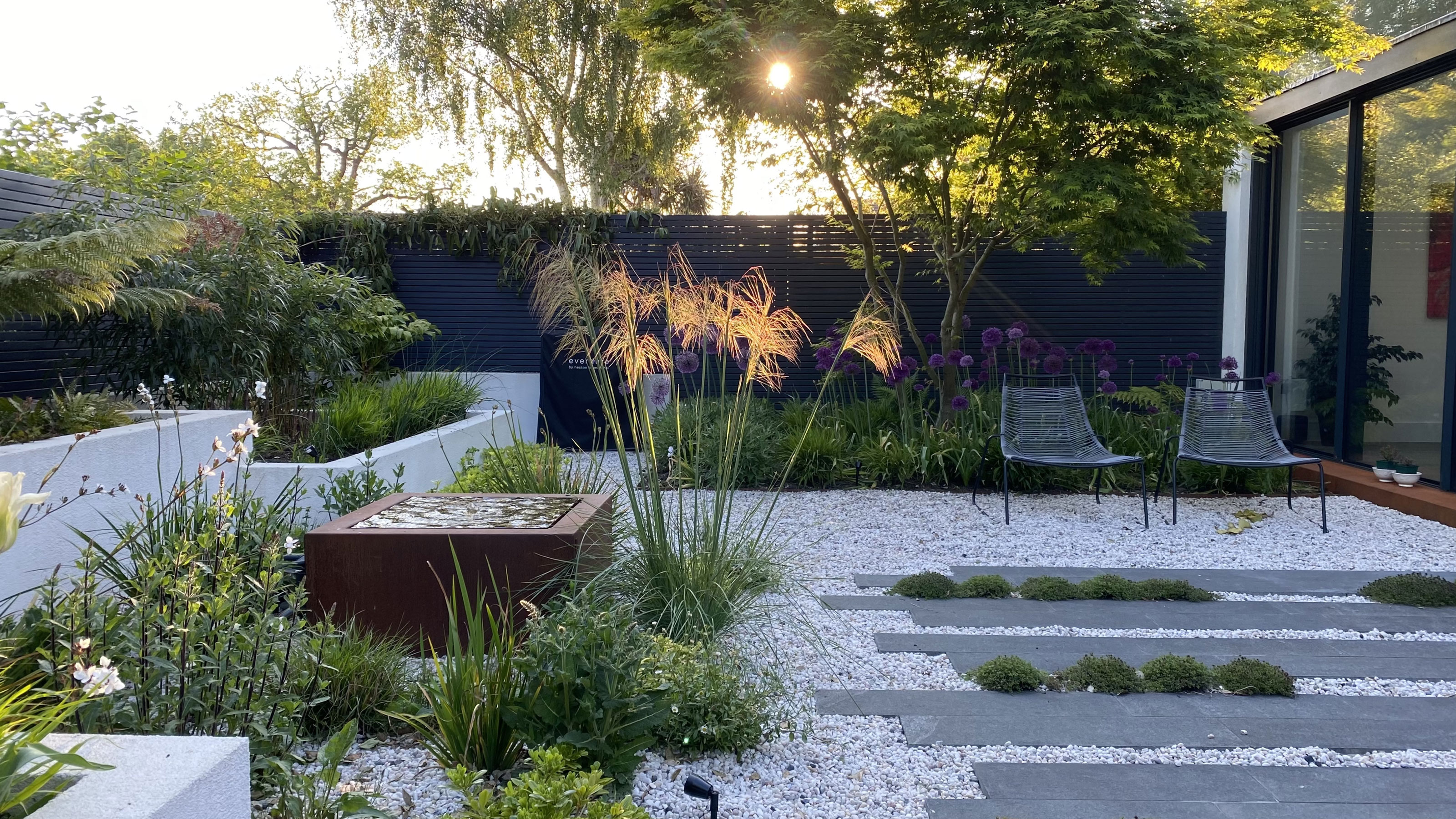

Landscaping with gravel is the go-to choice for modern, low-maintenance outdoor spaces. Cheap to buy, easy to spread and widely available, it’s a practical material that’s versatile too.
You can use small sections of gravel for a garden makeover that takes just a couple of hours but looks really professional, or it can form part of a much bigger landscaping project.
Gravel can be combined with drought-resistant plants such as ornamental grasses and succulents to create a Mediterranean-style garden. It's also perfect for any landscaping ideas around a water feature to create contrast against a pond, rill or vertical cascade.
It’s an easy solution for areas under trees where grass struggles to grow too, instantly upgrading a threadbare area. You can even try landscaping with gravel to break up large areas of patio pavers or wooden decking too, as well as using it to fill the gaps between stone slabs on pathways to create a modern look by adding contrast between rough and smooth textures.
This combination of plus points makes it the most versatile landscaping material around, plus locally sourced gravel is a sustainable option as well, and is good for the planet.
14 ways to upgrade your plot by landscaping with gravel
Perhaps you're looking for front yard landscaping ideas to max up your curb appeal. Or maybe you need to refresh your outdoor space for summer with some garden gravel ideas.
Whether you're aiming for a whole new look or some smaller tweaks here and there be sure to factor landscaping with gravel into your design plans.
1. Combine gravel with drought-resistant planting
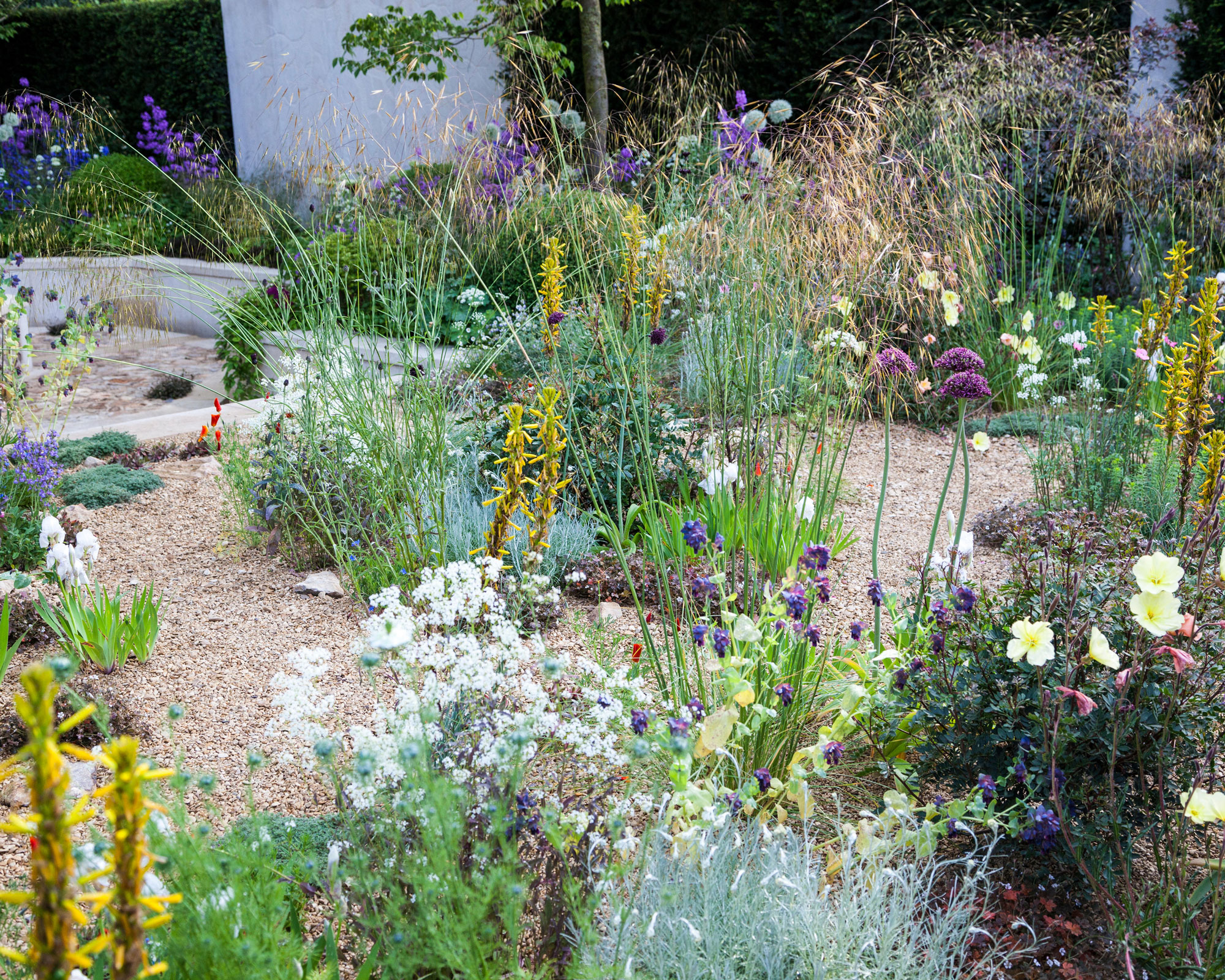
Break up areas of gravel with drought-resistant flowers and plants
Lots of different varieties of flowers grow really well in gravel gardens especially those that are tolerant of dry conditions and ones with gray, blueish or silver foliage. The gravel mulch not only improves surface drainage but also helps retain water deep in the soil to prevent evaporation from the surface.
Plant large areas with a mix of flowers and gravel and they won't need any watering in summer which makes this approach suitable for Mediterranean-style gardens with minimal maintenance. Leave gravel pathways where the plants are less dense, so it’s possible to walk through the plants and enjoy them up close.
Some of our favorite varieties for landscaping with flowers in a garden design like this include alliums, euphorbia, lavender, santolina and salvias, although there are literally hundreds of plants to choose from that will work well.
2. Include gravel in your patio design
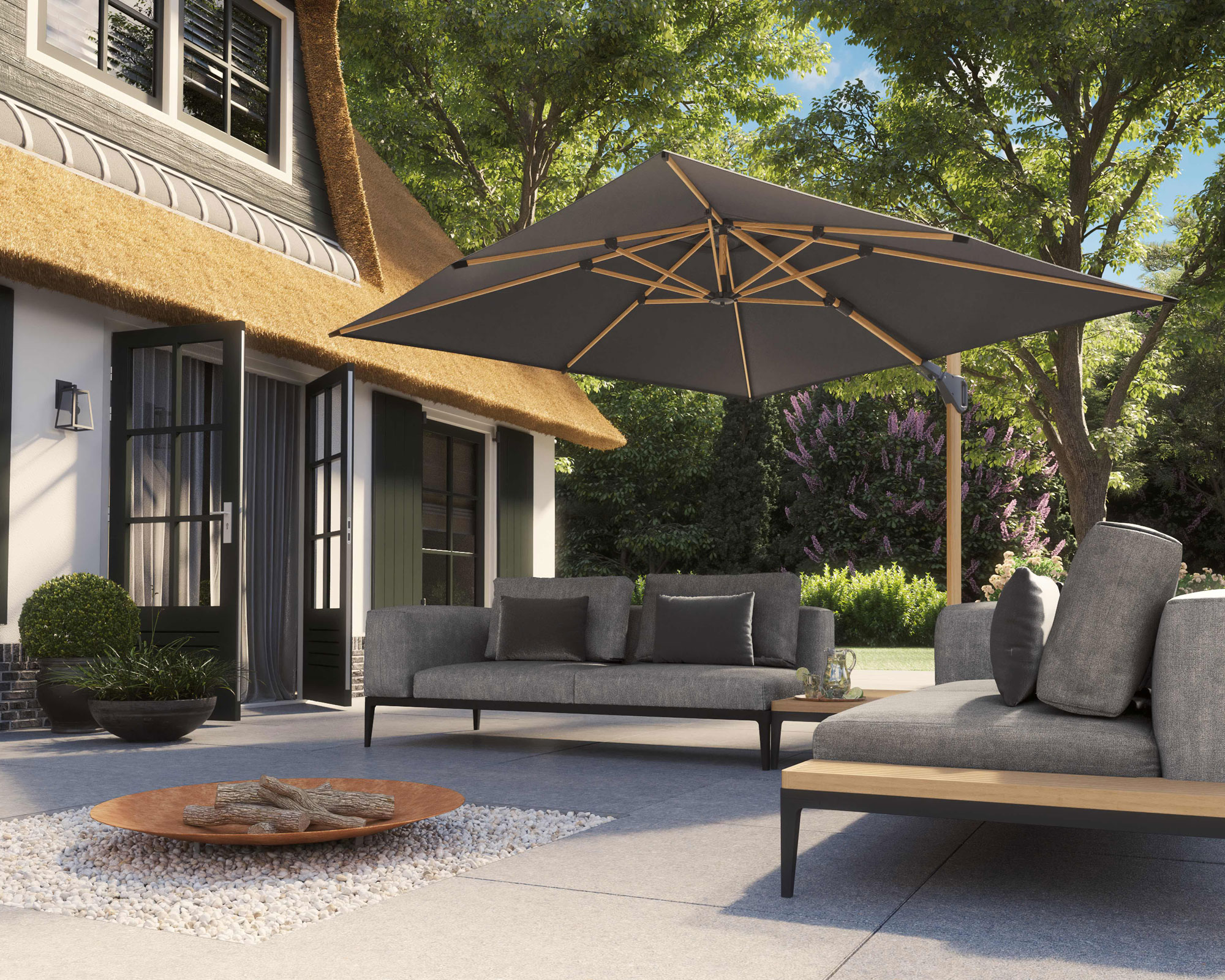
An area of gravel underneath a fire pit can be a practical choice for a patio
Smooth hard surfaces tend to dominate in modern gardens but designers often use the trick of introducing contrasting materials in a contemporary color palette to maximize texture and interest.
Adding a distinctive detail such as a bed of white gravel set in smooth paving works well in a bold architectural scheme like this one as part of your patio landscaping ideas. Decorative white and cream pebbles are available in a range of sizes and also come polished for a high-gloss finish that can work well with a range of patio materials.
3. Landscape around a water feature with gravel
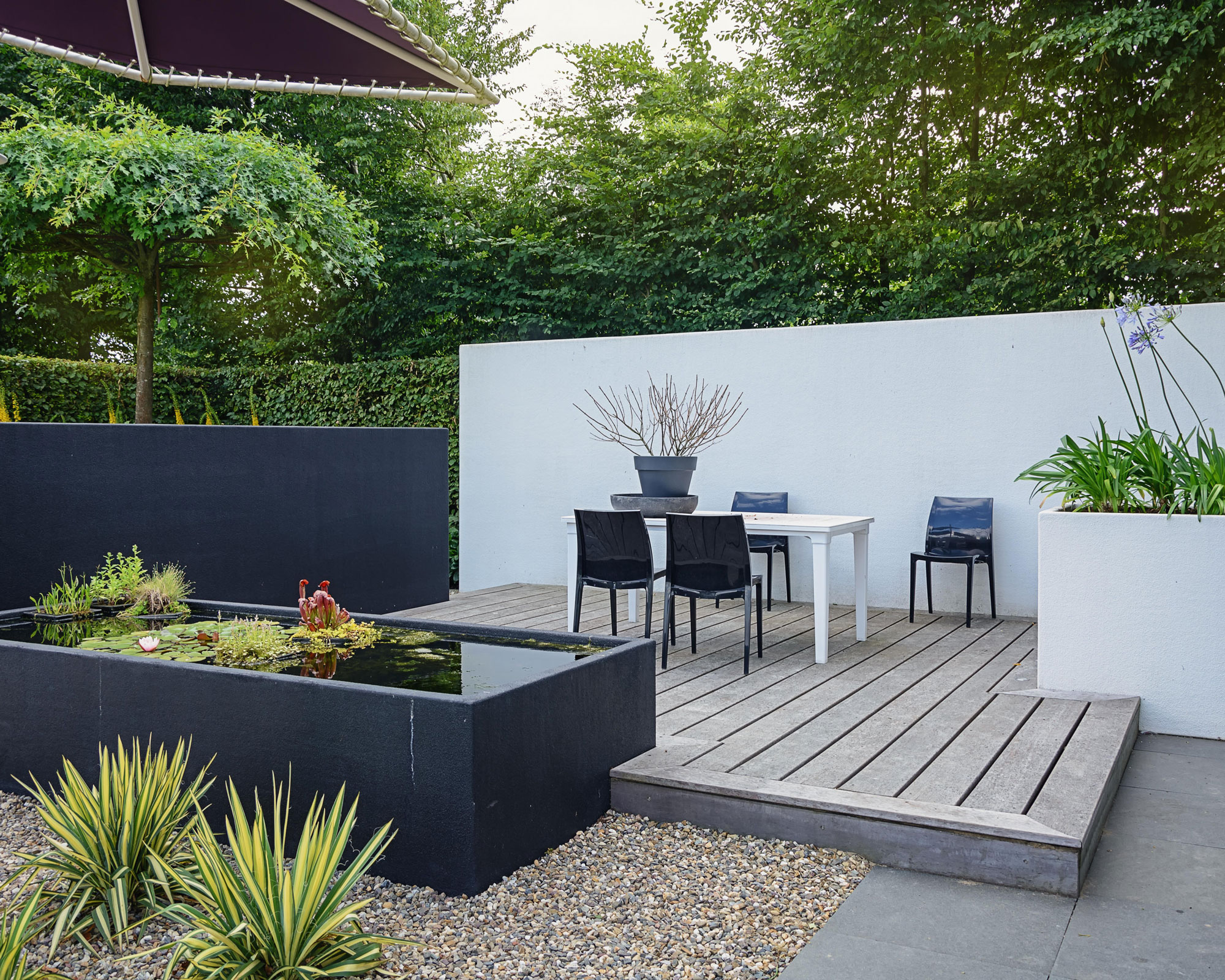
Areas of gravel look particularly effective when surrounding a modern water feature
Crisp beds of gravel always look good in contemporary gardens. They make a nice textural contrast to break up smooth pavers and wooden decks in patio areas. Soften the effect with bold leaf planting arching over or growing through the gravel.
Opt for ‘pockets’ to create little islands of planting that let you still see plenty of gravel. Any plants with a Mediterranean feel are the natural choice. Spiky phormium can be planted directly into the gravel and look stunning in modern spaces.
Gravel is a versatile material that's perfect for landscaping around water feature ideas to create contrast against a pond or vertical cascade. If you want to use gravel for a practical purpose like this it’s a good idea to choose a medium-sized grade. if it’s too small and fine then it will spread around easily as you walk over it. if it’s too large then it may make walking on the surface difficult.
4. Go Japanese with waves of raked gravel
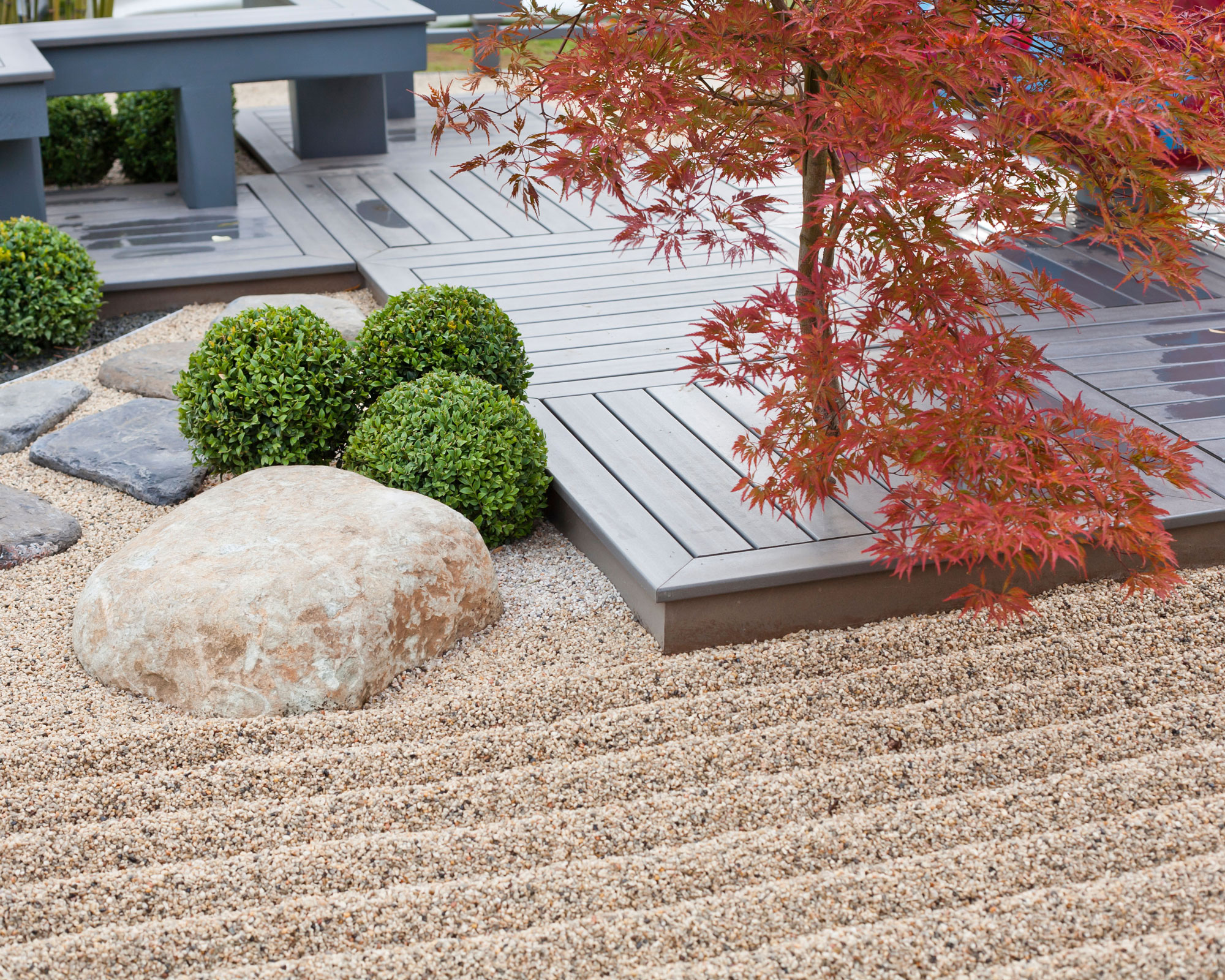
Gravel is a key element of Japanese garden design
If you love the thought of Japanese garden ideas make sure you include landscaping with gravel in your plans. The aim is to use it in a calming, serene and ordered way. Japanese gardens are used as a place for contemplation, so it’s the perfect opportunity to slim things down and keep the style simple. It’s all about attention to detail.
Space is organised and connected, whether that’s with a carefully positioned vertical tree or the placement of a series of smooth stones. Hard landscaping materials include circular paths constructed of stepping stones, interspersed with pockets of raked gravel that looks like rippling waves.
5. Segment gravel into eye-catching designs
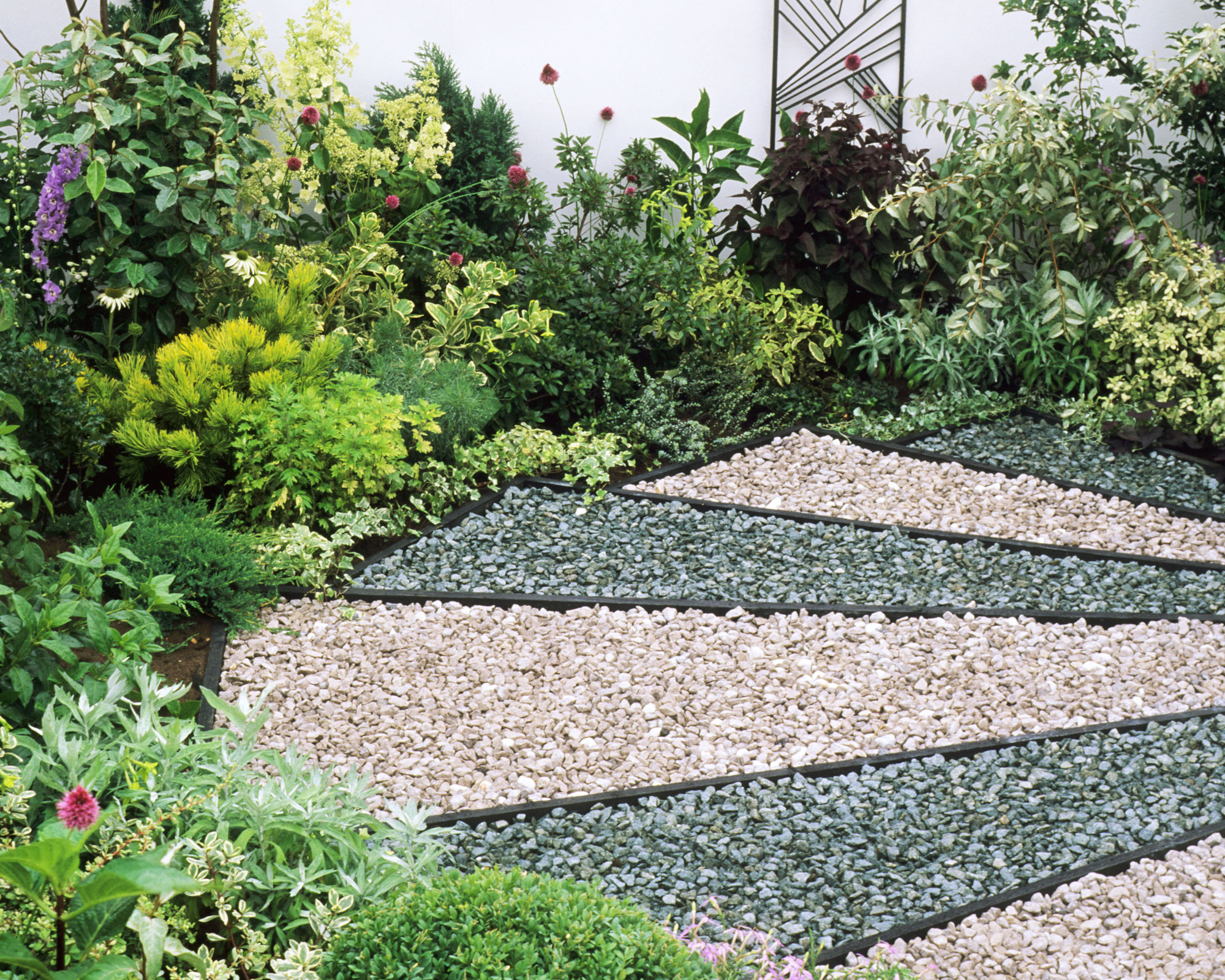
Create striking patterns with different sections of colored gravel
Gravel is a practical choice for small areas of landscaping that would be difficult to pave. Create impact with a combination of different types laid out in a formal, well-defined geometric pattern such as a striped or chequerboard design. Use different colors and sizes of gravel to create an eye-catching pattern.
If a design like this is used next to grass or a planted area it will need to be contained, otherwise the gravel will spread out and you will lose the definition. Timber, brick or concrete can be used to create a 'framework', as well as metal garden edging ideas.
Make sure the surface is as flat as possible before you start by removing any large stones. The joy of gravel is that it fills holes beautifully, giving a level surface in a relatively hassle-free way. Always use a membrane to prevent weeds breaking through and blurring the edges of your design.
6. Mix gravel with larger rocks
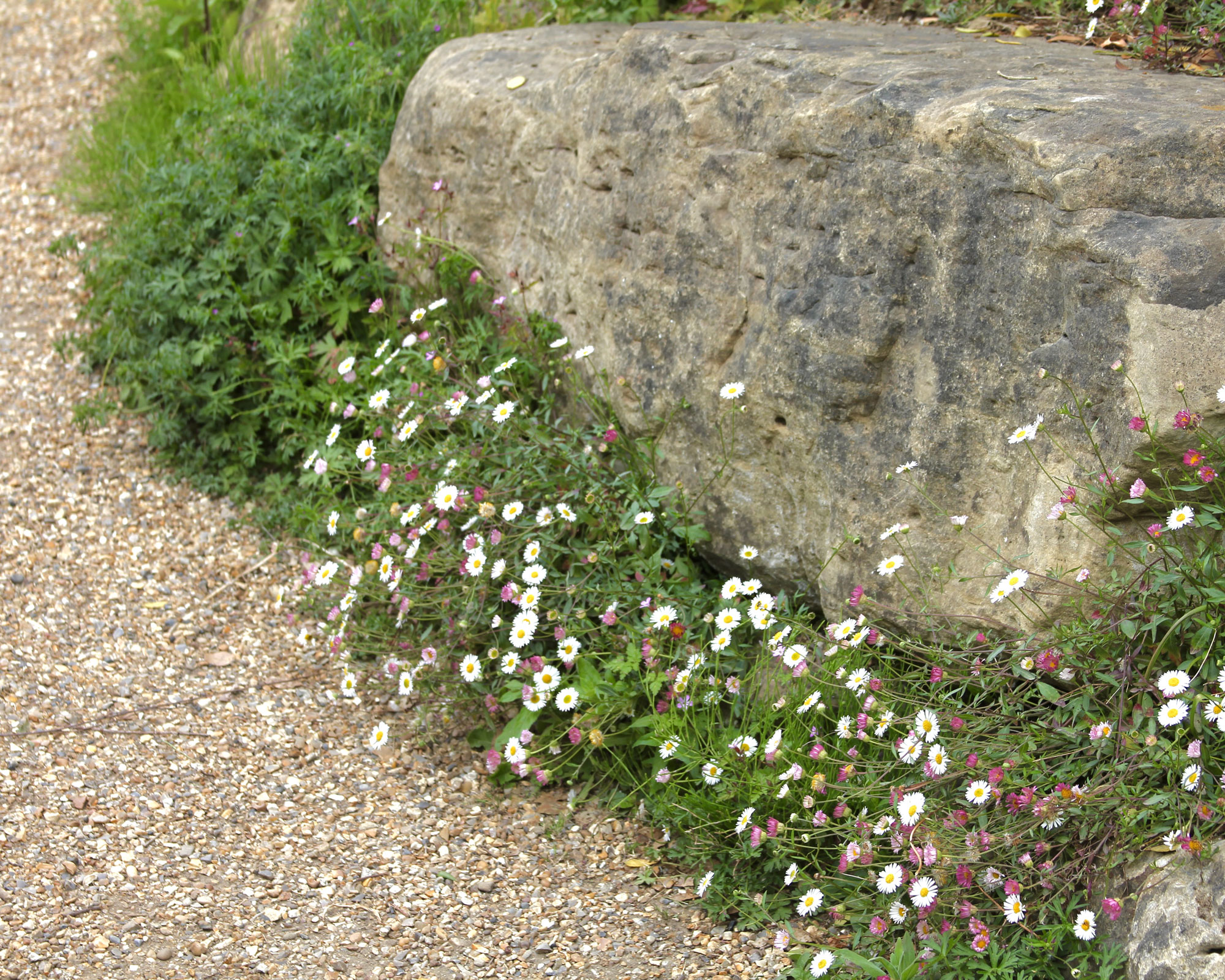
Play around with the shape and size of your hard landscaping materials
A ground cover garden that combines soft cushions of planting with gravel and rocks is a low maintenance landscaping option that suits most spaces. This style of garden can be left to evolve into a more natural look.
'Gravel is an incredibly versatile material to use in the garden,' says garden designer Fiona Lamb. 'Available in a wide range of colors and sizes it can look equally at home in a traditional or contemporary setting and is often a cost-effective alternative to other hard landscaping materials.
'It can provide a useful means of drainage and can be used as a planting substrate itself. It can be useful to break up and soften larger areas of paving or paths. It can then be planted into with low growing plants to enhance the look.'
Try landscaping with river rocks and landscaping with boulders if you like the idea of introducing a more rugged looking terrain in your backyard.
7. Plant ornamental trees straight into gravel beds
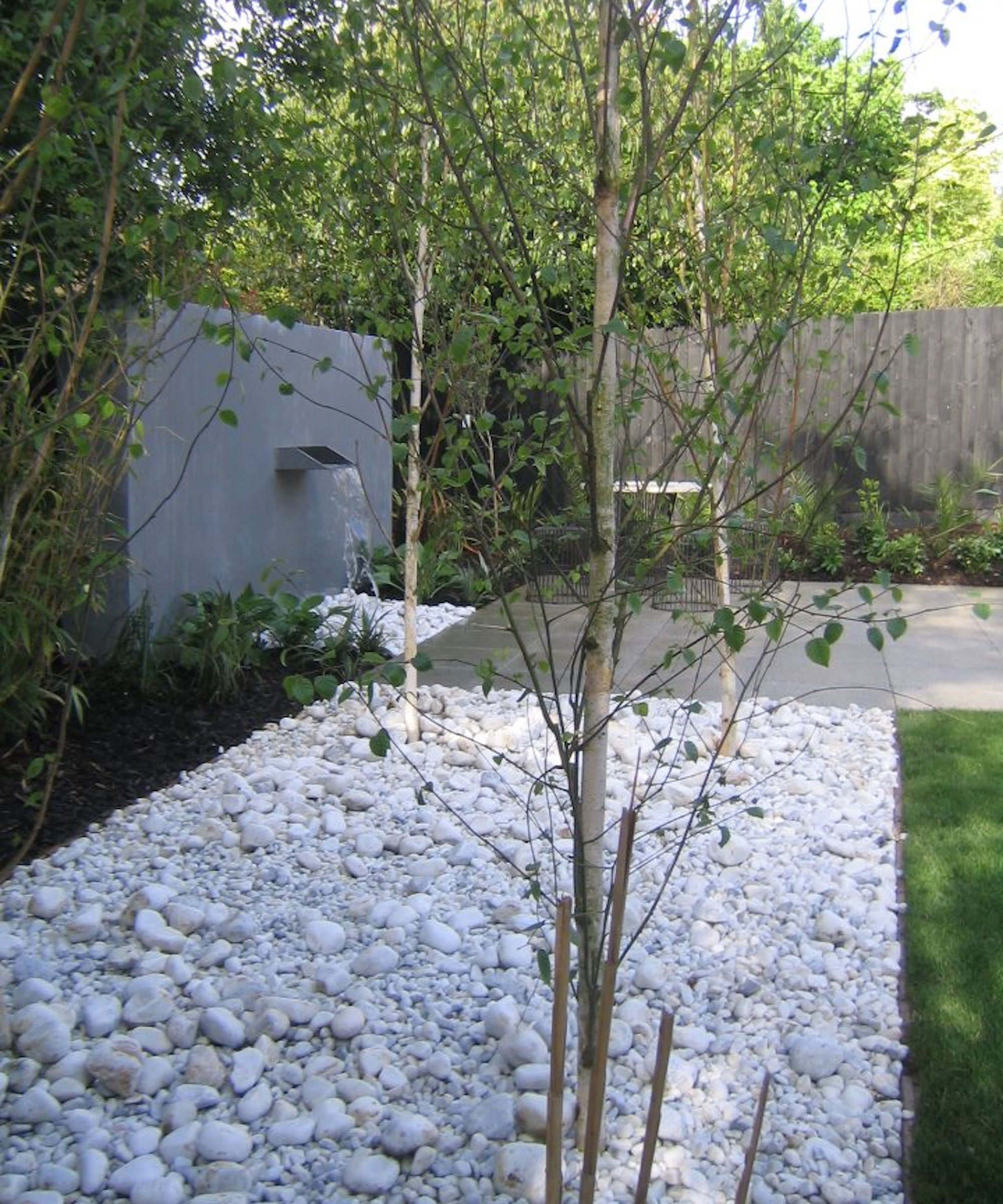
White gravel complements the color of these silver birch trees
If you like modern garden design that features clean crisp lines that work in an architectural way try using smart gravel beds for landscaping around trees.
'In this design large white cobbles are mixed with smaller polar white pebbles on top of a weed membrane as a mulch below the multi-stemmed silver birch trees and at the base of a stainless steel water blade,' explains garden designer Samantha Brown.
The colors in this contemporary garden are muted using gray, black and white, so texture from both the landscaping materials and the plants is important. The chunky mix of white gravel works as a key unifying element and helps to set off the silver birch trees to perfection.
8. Pick gravel for a Mediterranean-style feel
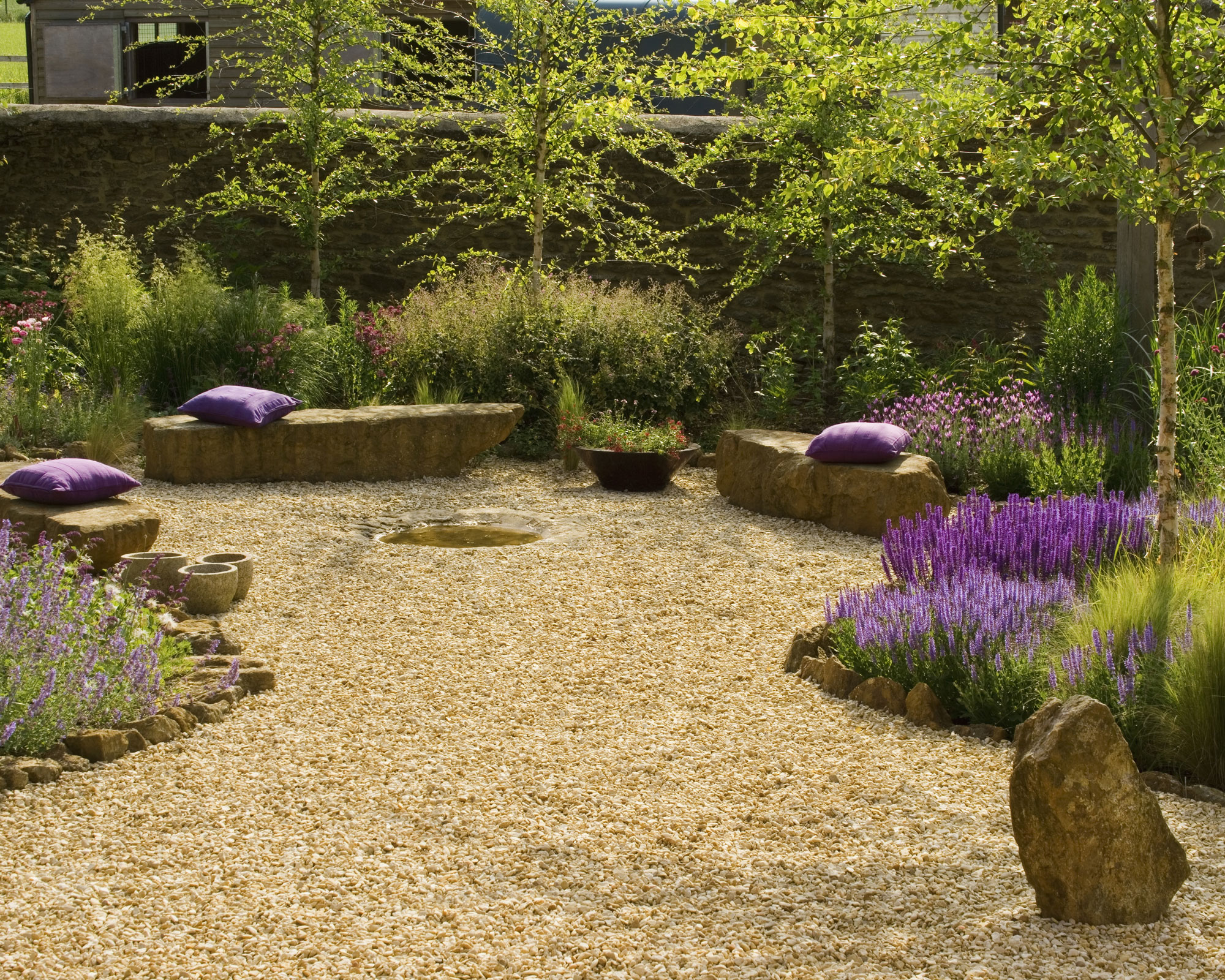
Using gravel is one of the easiest ways to create a classic Mediterranean-style space
In Mediterranean garden ideas gravel is often interspersed with rocks and a natural planting scheme that combines different colors and textures.
If you like the idea, try introducing a variety of plants that work well landscaped with gravel and rocks. Many plants are happy to settle their roots straight into gravel. Any gaps will soon be colonised by self-seeding plants that will help your landscaping design evolve smoothly from year to year with very little input from you.
Try drifts of hardy and low-growing plants including lavender, herbs and succulents, then try landscaping with grasses to create a naturalistic look too.
9. Replace a lawn with easy gravel
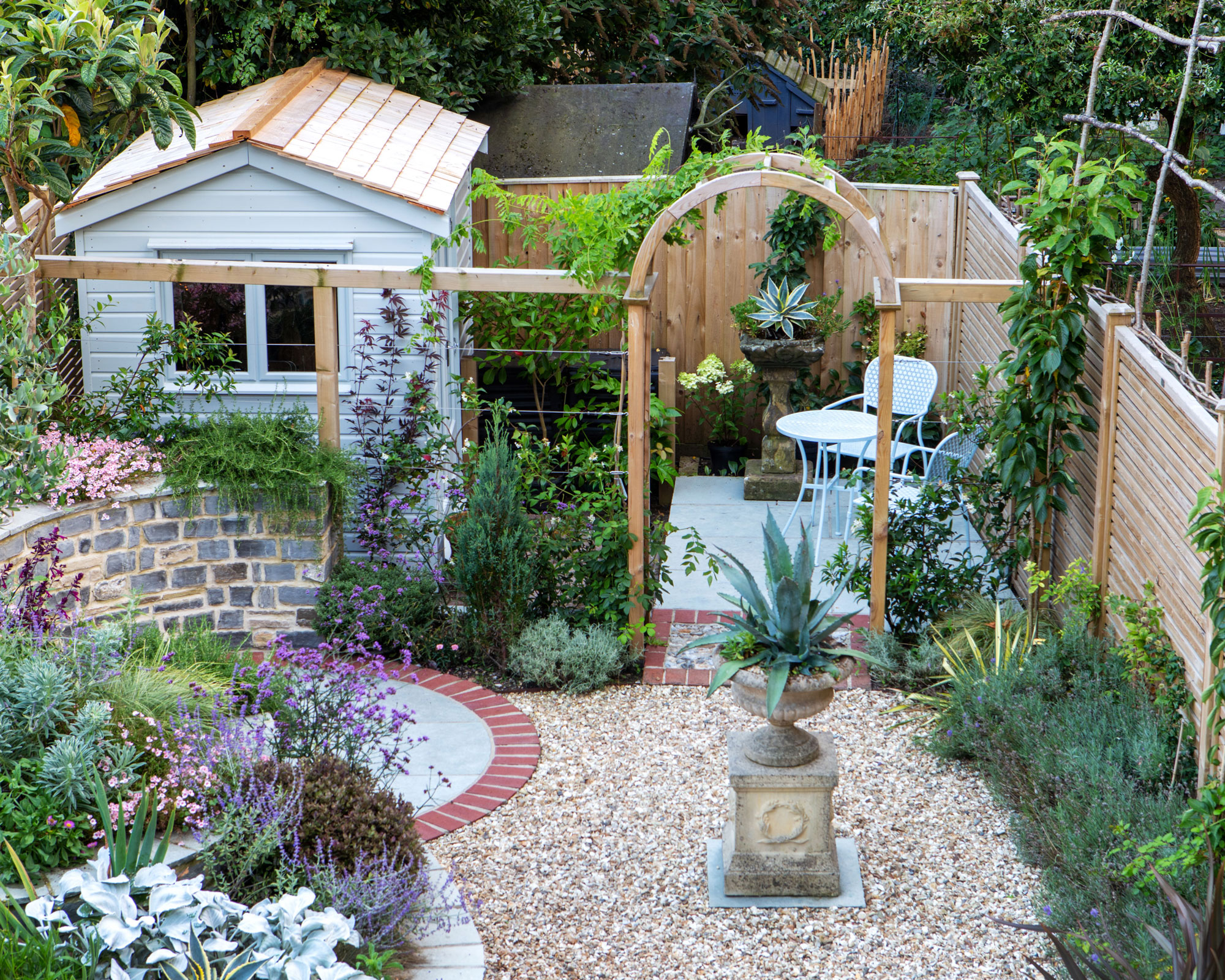
Include gravel for a low-maintenance landscaping scheme
If you're interested in sustainable gardens one way to do this is cut down on the amount of lawn you have and introduce areas of gravel instead as part of your cheap landscaping ideas. Consider how much lawn is absolutely necessary in your garden and eliminate it from places where its presence can’t really be justified. Perhaps even do away with it altogether.
After all, lawns tend to be high maintenance, require lots of watering and chemicals to keep them looking good, but even so often end up looking pretty threadbare by the end of the summer. In addition, lots of small town gardens that tend to be overlooked and shady end up with scrappy looking rectangles than are a million miles away from the lush patch of green you envisaged.
This small town garden design in Dorset, in the UK, uses locally sourced materials instead of a lawn. 'The choice of materials includes blue lias stone, chard flint gravel and Ibstock brick, which were driven by the desire to stay connected to the locale,' explains garden designer Alice Meacham, 'while at the same time updating the garden into a modern living space.'
10. Border a gravel path with ornamental grasses
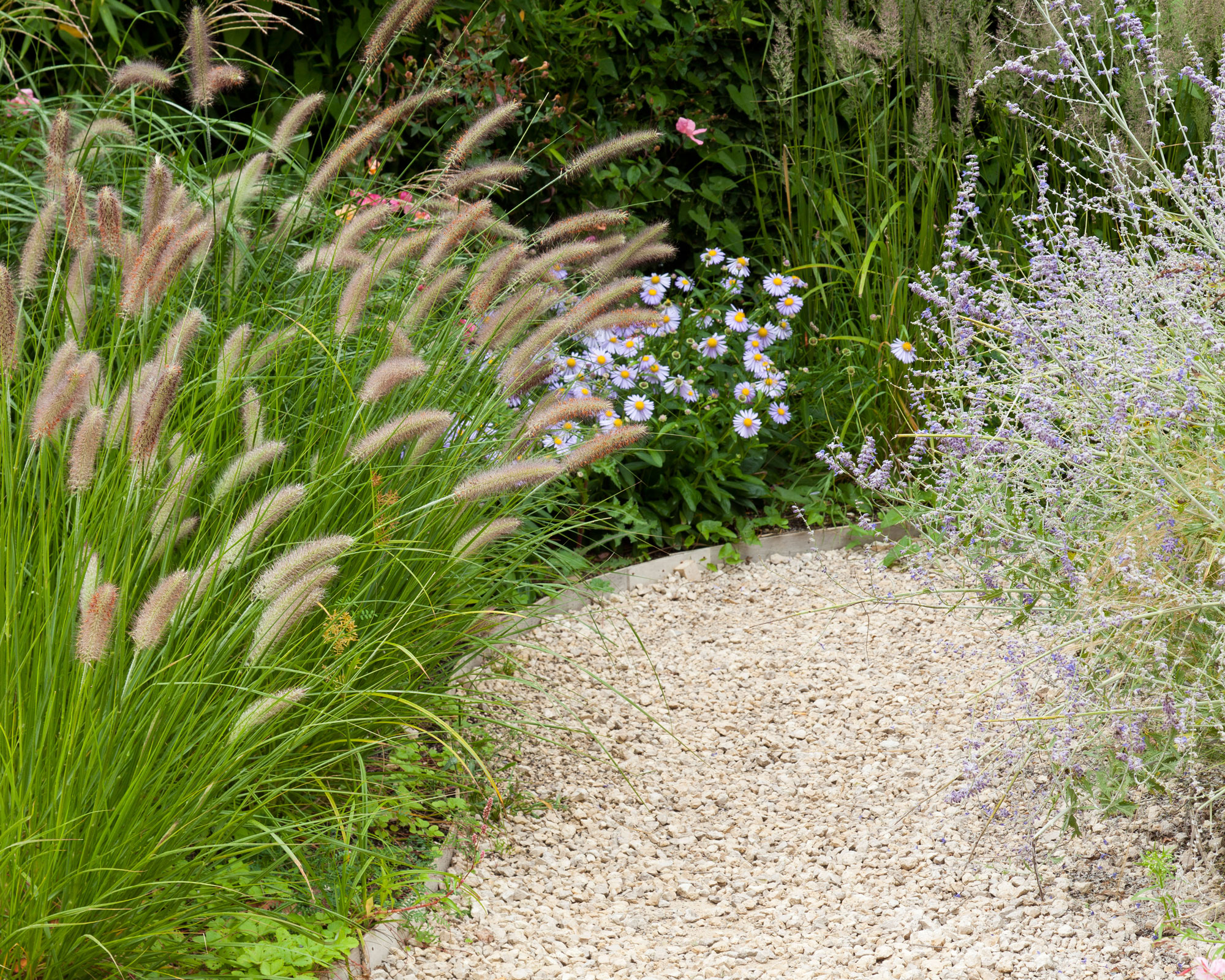
Pennisetum, asters and Russian sage line this gravel path
Combine gravel with airy types of ornamental grass and soft pillows of perennials in your garden path ideas to create a naturalistic effect. The great variety of colors and contrasts that are available allows you to choose a harmonious palette of colors such as the warm buff scheme used here.
A design like this has visual impact all year round, irrespective of whether the plants or grasses are in flower as you will get interesting sculptural seed heads during the cooler months. Fountain grass (Pennisetum) is the star of this particular show. The soft golden pink tinted flower spikes and graceful foliage are retained throughout fall and into winter making them the grass that keeps on giving.
11. Light up your gravel landscaping at night
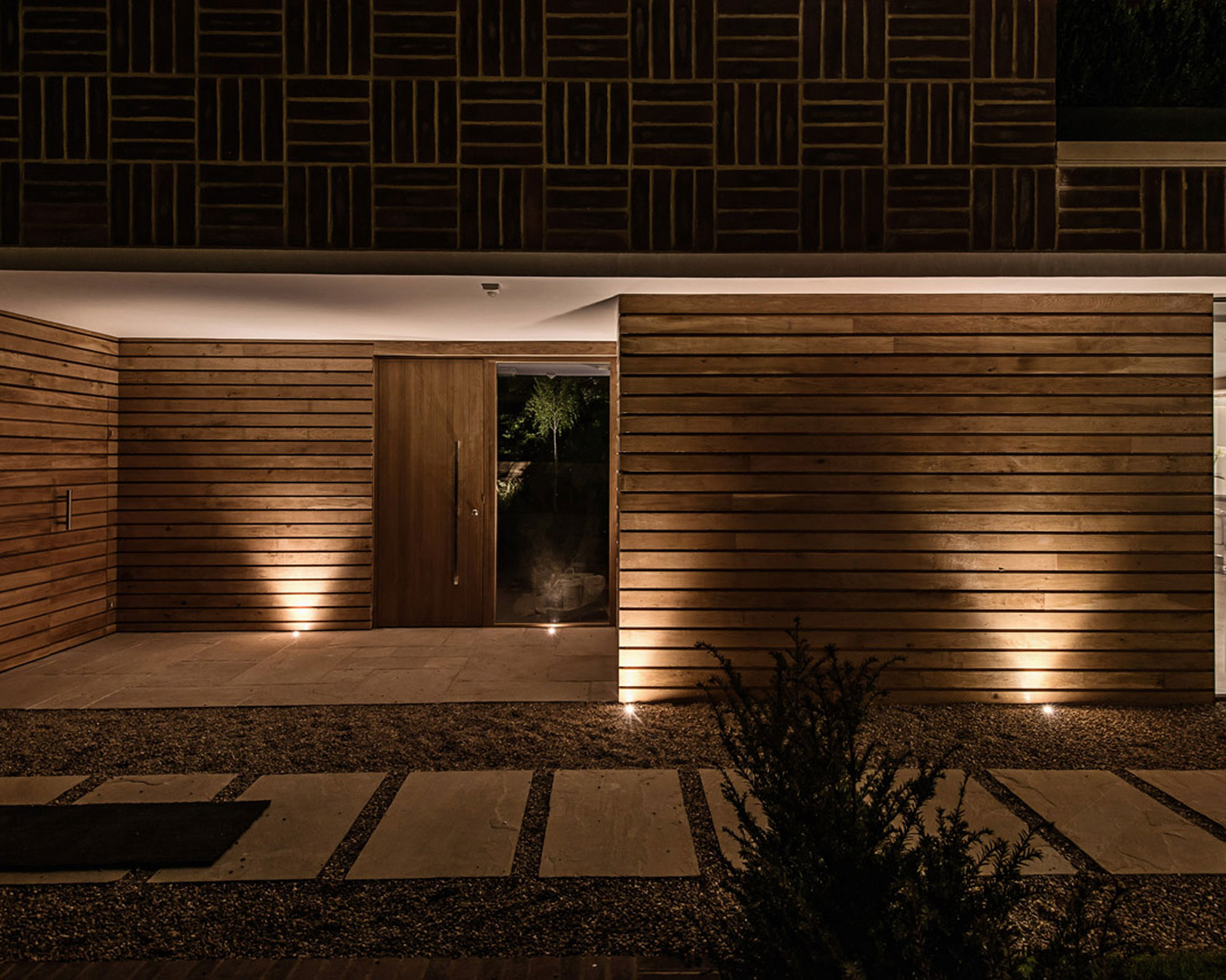
Highlight your chosen landscaping materials at night with cleverly placed lighting
At night time switch up your gravel driveway ideas using V-shaped washes of light to create a soft and welcoming ambiance in your front yard. Lights can be strategically placed pointing downwards to illuminate gravel to get the best effect.
'Gravel gardens give you the opportunity to work with some interest and depth when it comes to lighting,' says Piero De Marchis of Detail Lighting. 'Gravel tends to be used mostly to frame pathways or walkways, so it’s important to light them appropriately.
'If gravel is laid next to a vertical surface, like the side of the house or garden walls, use uplighters in the ground to shine brightly upwards, at intervals of around 1-1.5 metres to create a consistent pathway. Alternatively, if the gravel is in a more open setting, place low level outdoor ground spotlights in amongst the planting and other areas that frame the gravel, to create a clear pattern and outline.'
If you want to try landscaping with lights like this in your front yard, a garden designer will be able to help you plan it.
12. Fill any gaps with pockets of gravel
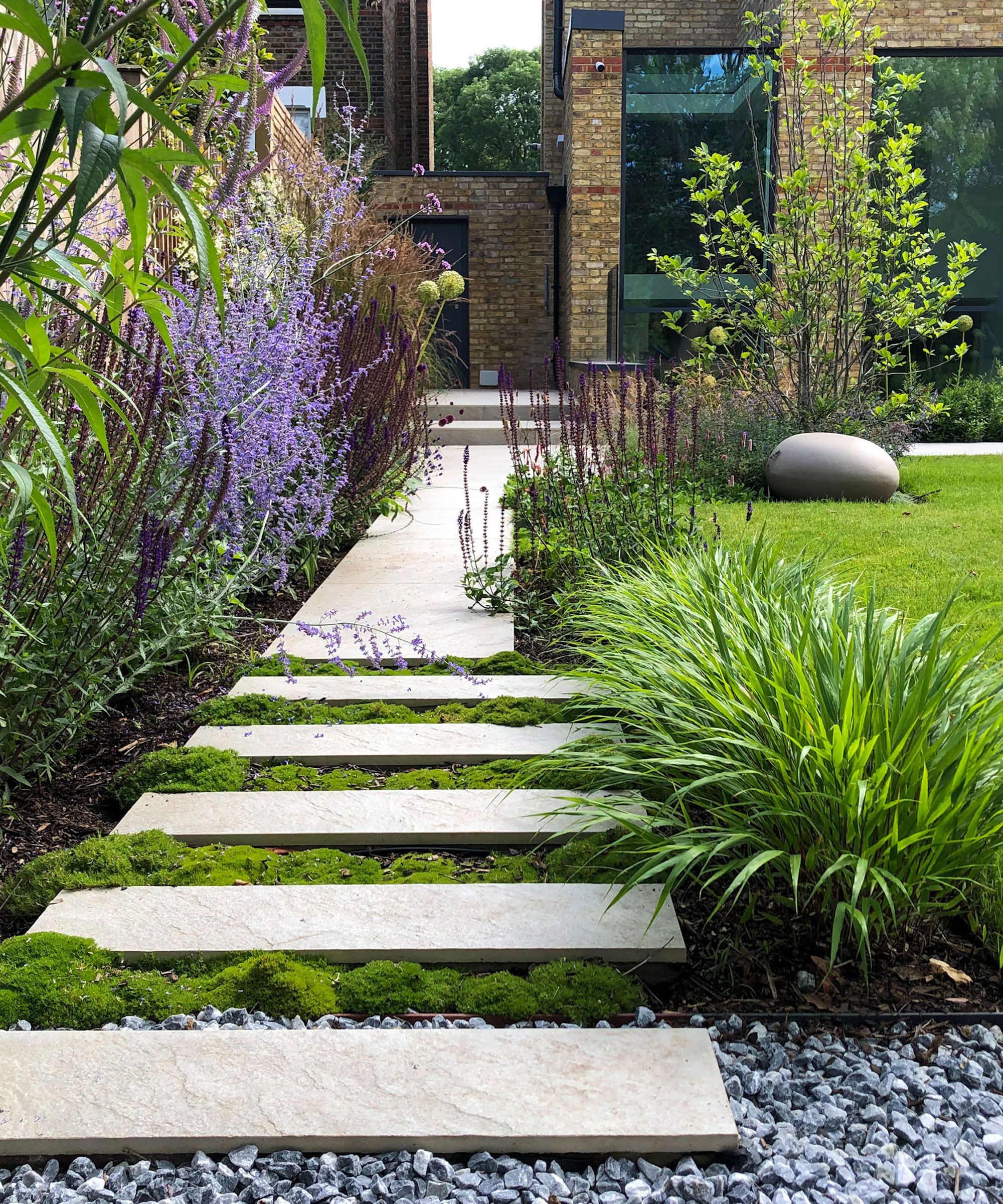
The stepping stones in this project are Silver Grey Porcelain and the gravel is a Silver Grey Limestone from CED Stone
Designers often use a mix of materials to maximize texture and interest when landscaping with gravel. This can include both manmade and natural materials, such as slabs or pavers mixed with gravel or pebbles.
Using gravel to fill in the gaps around smooth slabs turns a path into an interesting design that demands attention in itself rather than simply being a route from A to B.
'Using loose gravel in a garden requires some sort of retaining edge, to stop the gravel from spilling out onto, for example, plant beds or lawn,' explains garden designer James Lee. 'In this project we used treated steel edging to act as the retaining device. This has to sit slightly higher than the finished gravel level.'
13. Use gravel for landscaping around hot tubs
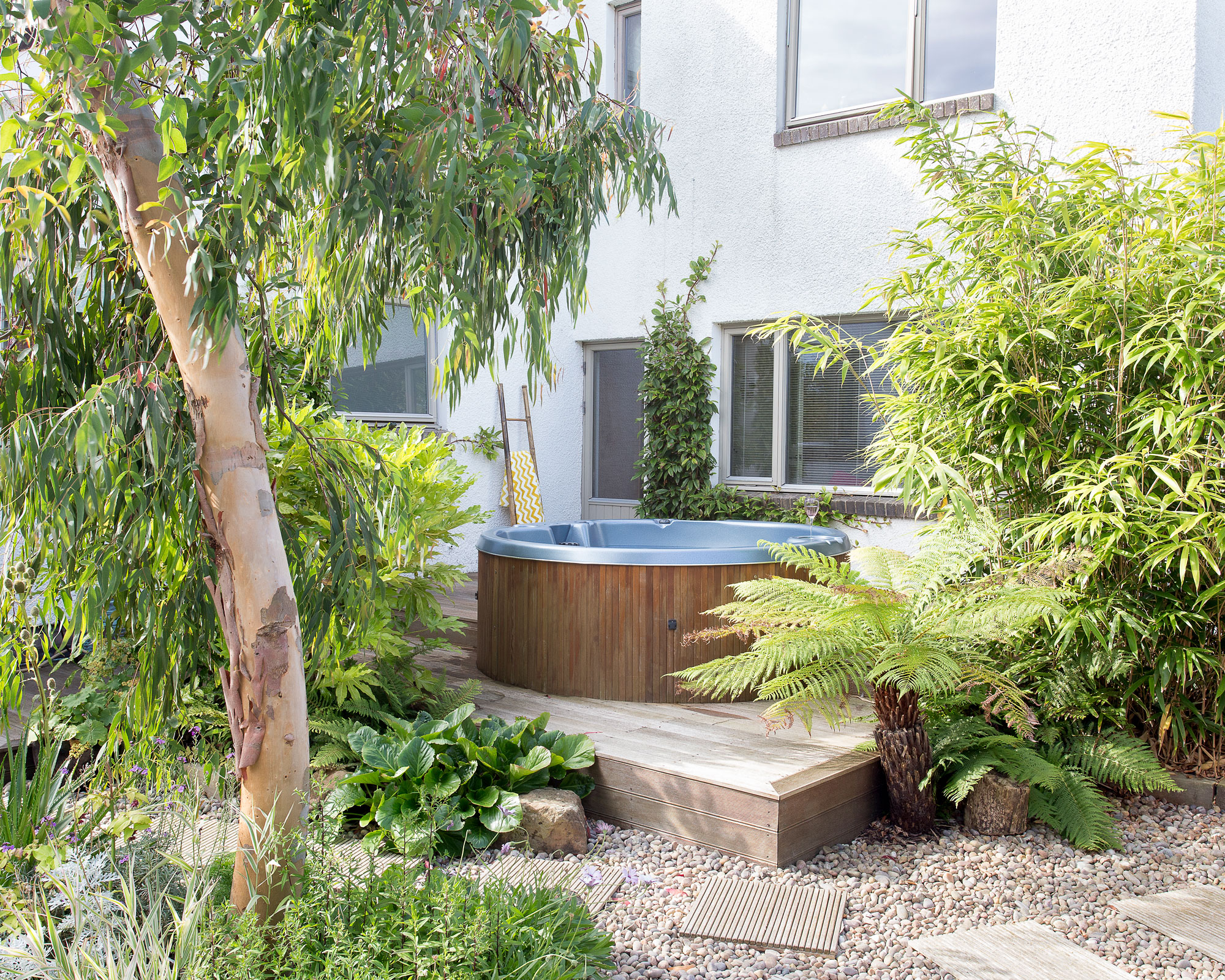
Gravel and timber go well together for a modern, streamlined scheme
Use gravel to soften the look of the area around your hot tub so it fits more naturally into your garden. Sections of gravel with work well with if you're also landscaping with timber to create a raised deck for your hot tub, for example.
It's the practical choice too - who needs a ruined lawn when you can have water-absorbing gravel to mop up any overspill.
For the ultimate privacy for your hot tub zone, you might want to consider landscaping with evergreens to get a look like this one, surrounding your hot tub space with leafy screens.
14. Create a modern design with white gravel
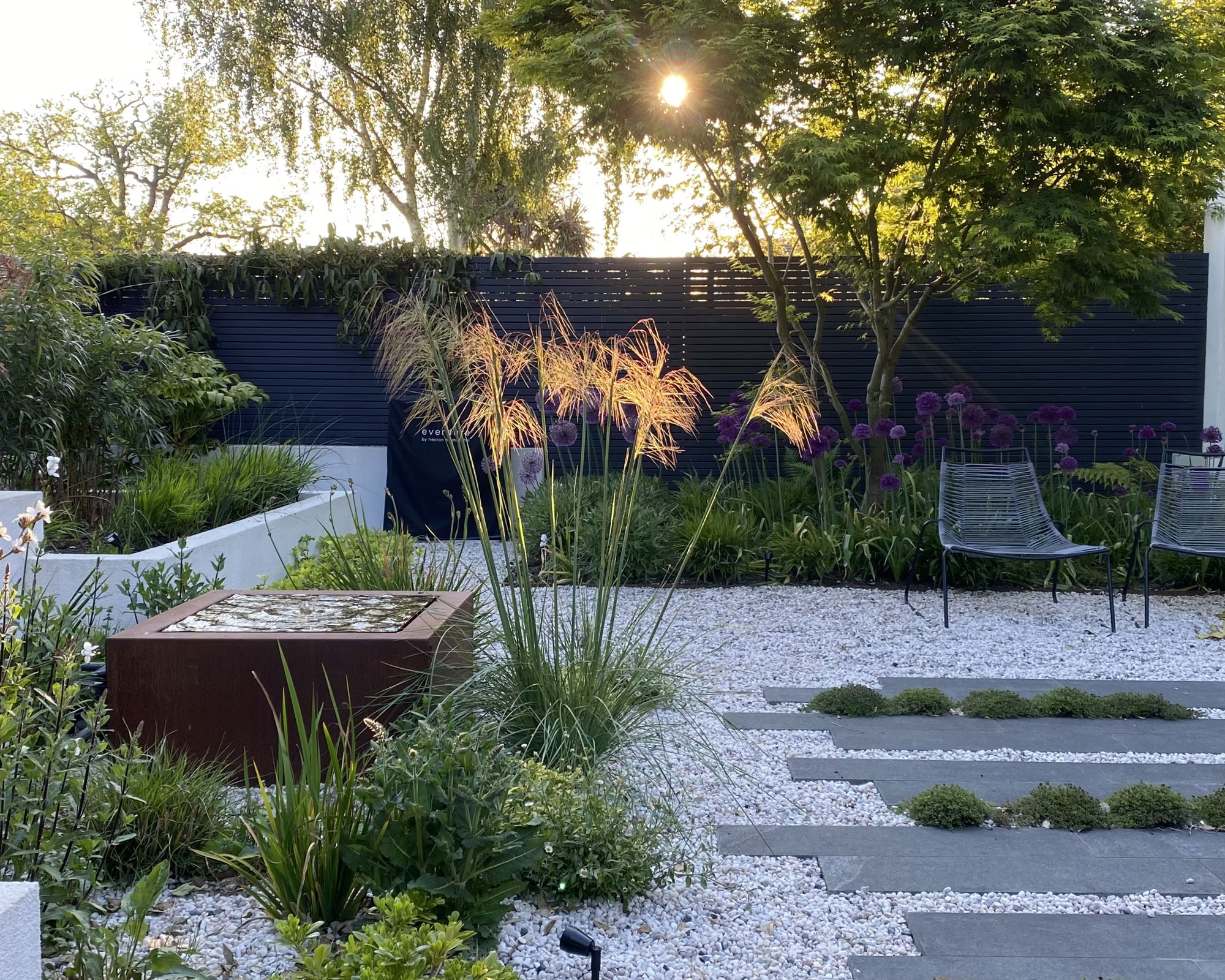
Opt for light-colored gravel for a contemporary look
If your garden is shady for part of the day using white gravel to reflect the sunlight is a functional choice as well as a decorative one. This is because white gravel bounces light around to give a boost to your plants and help them grow.
Using white gravel instantly brightens the look of shady spots while reflecting existing light to nearby plants, helping them to benefit from more sunshine. It's important to check that any plants near white gravel will benefit from this extra light.
It also works if your garden is a sun trap. 'This back garden was designed to complement the contemporary, modern interior of the house,' explains garden designer Christine Wilford. 'Bright materials with strong contrast continue the black and white color scheme outside.'
The white gravel areas are integral to the main paving ideas in this garden, contrasting with the sharp and crisp linear black basalt pavers interplanted with low growing thyme. The white theme is picked up with white rendered raised beds featuring architectural planting such as tree ferns and bamboo.
What type of gravel is best for landscaping?
The best type of gravel for landscaping is generally considered to be pea gravel, which tends to be the garden designers' favourite too as the end result looks so professional. The small smooth and rounded stones come in a choice of natural colors, including shades of cool gray and crisp white.
When landscaping with gravel choose the color carefully to complement paving, decking and any other garden features so you don't make any landscaping mistakes. There are many different types of gravel available so whatever color scheme you have in mind can usually be matched.
Think about where you’re going to be using gravel before making your choice. if it’s going to be for decorative use you have much more choice and can opt for larger gravel pebbles as the area won’t be walked on. Specialist companies offer free samples so you can get an idea of how the gravel will look in situ.
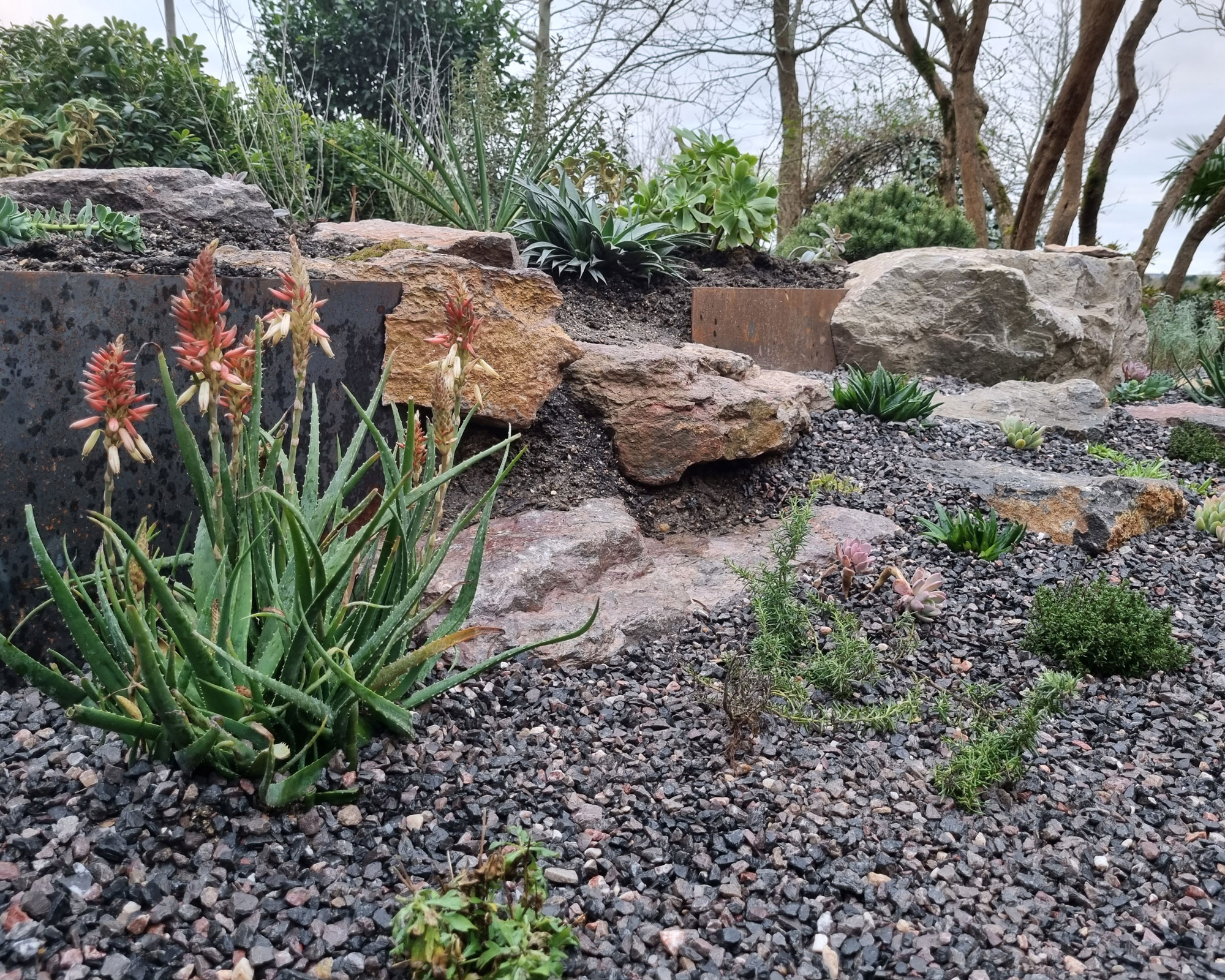
This planting scheme in gravel with naturalistic rock boulders by garden designer Adam Vetere looks good plus ticks the box in terms of sustainability, biodiversity and maintenance. The planting is low maintenance and drought tolerant to limit water usage.
What is the cheapest gravel for landscaping?
Generally, the larger the stones you use when landscaping with gravel, the higher the costs. According to Homebase, pea gravel tends to be the cheapest. This is a small-stoned mix (you guessed it – each the size of a pea), in a range of warm-toned colors such as buff, honey, and grey.
Crushed marble comes in at $35 to $85 per yard, according to HomeGuide.com. Larger river rocks will cost up to around $70 per yard and slate chips can cost up to $80.
Meanwhile, white and black gravel mixes are more at the pricey end, at around $130 per yard. Quartz gravel is also a premium choice, coming in at around $150 per yard.
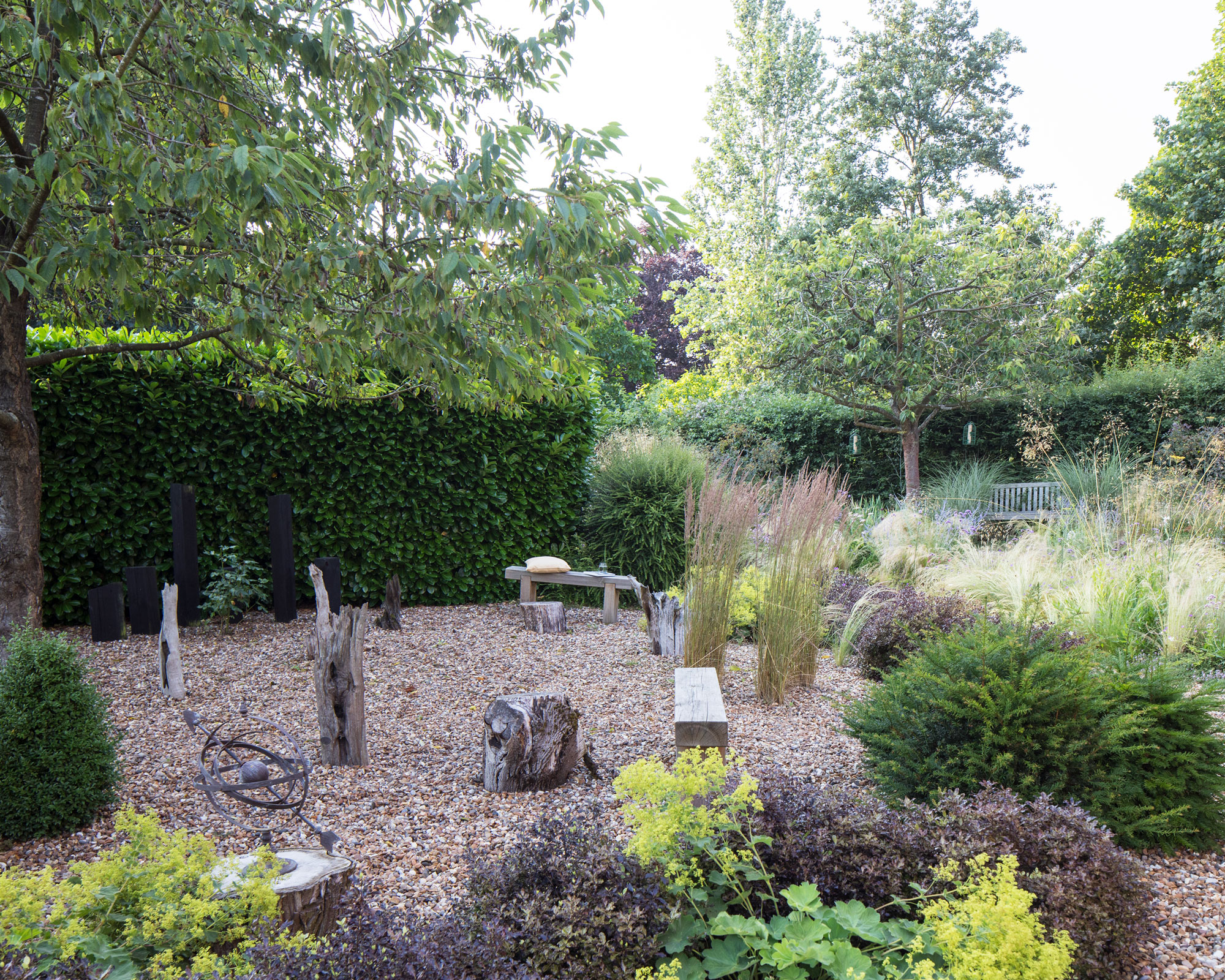

Lifestyle journalist Sarah Wilson has been writing about gardens since 2015. She's written for Gardeningetc.com, Livingetc, Homes & Gardens, Easy Gardens and Modern Gardens magazines. Having studied introductory garden and landscape design, she is currently putting the skills learned to good use in her own space where the dream is establishing a cutting garden.
